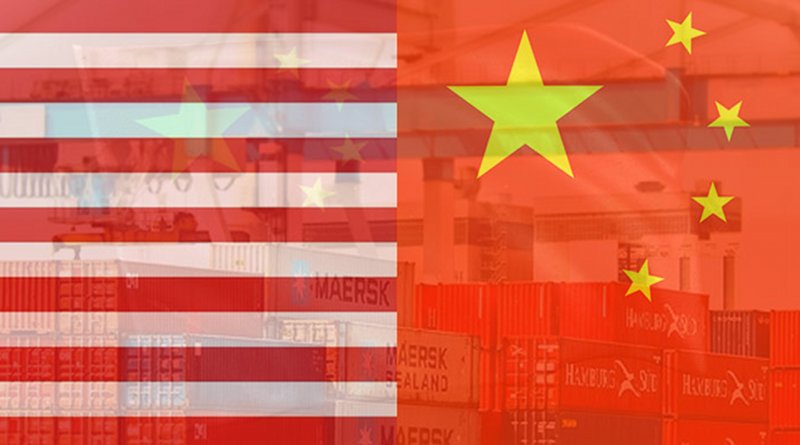Tariff Damage Spreading in US, China Within Target In H2 2019 – OpEd
In the second half of 2019, US economic prospects will soften, despite the Fed rate cut, whereas Chinese growth target is likely to prevail. It’s time to prepare for diminished global economic prospects in 2019-20.
After an important meeting of the Central Committee of the Communist Party of China (CPC), participants said that China seeks to make its fiscal policy more effective and to maintain “reasonably ample” liquidity.
Instead of resorting to a stimulus in the real estate market, the emphasis will be on “proactive fiscal policy and prudent monetary policy.” It is a challenging balancing act, but the right stance in the right time.
Meanwhile, President Trump pledged to impose an additional 10% tariff on Chinese imports to the US, which caused US stocks to tank 280 points. The White House needs a scapegoat as the Fed cuts cannot offset Trump’s tweet policies, US growth is slowing and a slowdown is looming in 2020.
China’s 2019 growth within range
Clearly, the CPC Central Committee seeks to avoid targeted but costly stimulus policies, which could exacerbate new risks of asset bubbles over time, but it will ensure adequate fiscal support.
Since infrastructure investment remains relatively soft by historical standards, fiscal easing on investment may prove likely in the second half of the year. It could be biased toward small enterprises and startups.
Moreover, fiscal easing is likely to be coupled with monetary support, including cuts of the banks reserve requirement ratio. Although the easing bias could cause downward pressure on Chinese bond yields and corporate spreads in the near future, the big picture suggests stabilization and resilience.
In the second quarter, Chinese economy grew 6.2%, a drop relative to 6.4% in the first quarter, yet hardly a surprise in view of global challenges. China’s economic growth is within the target range of 6% to 6.5% set by the government. Indeed, the full-year 2019 growth rate of 6.2% remains achievable, even if growth stabilizes around 6% to 6.2% in the second half.
In view of the CPC Central Committee meeting, policy authorities are likely to stick to the effort to cap debt growth. While that will support Chinese economy in the long term, the potential risk in this approach is premature tightening in the short-term. To avoid adverse outcomes, fiscal easing is likely in the second half of the year, while monetary easing will be likely to offset riskier scenarios.
Such stances could benefit Chinese stocks, which will also be supported by the anticipated foreign inflows, thanks to the inclusion of Chinese assets in international benchmarks. Despite the relatively benign macroeconomic prospects, more optimistic scenarios are constrained by the lingering trade-war uncertainty and caution in economic sentiment.
The US economy is a different story.
Fed cuts cannot contain White House’s policy mistakes
In the second quarter, US GDP grew at a 2.1% pace, which heralds “slowing economy.” Last spring, I predicted in China Daily that collateral damage in the US economy would begin to be felt more broadly by the summer. And a month ago, I argued that this damage is spreading, particularly as the White House is initiating new tariff wars against other countries around the world.
That is one reason why the US Federal Reserve – in a widely expected move, but one that critics see as a sign of diminished independence – cut interest rates by 25 basis points to a range of 2% to 2.25%, for the first time in more than a decade. The Fed also declared a premature end to its balance sheet reduction.
Ironically, the Fed’s statement – unchanged economic conditions, solid job gains, moderately-rising economic activity, though soft business investment – did not necessarily warrant a rate cut (the decision was not unanimous). What motivated Fed chair Jerome Powell’s decision may well have been the muted inflation pressures and particularly global growth concerns, which the Trump White House has undermined since the onset of its tariff wars in spring 2018.
Interestingly, the Fed cut did not cause a rally; it stumped the market. S&P 500 dropped almost 2%; 10-year Treasury yields to about 2%. The Fed cut does not imply a start of a new rate-cut cycle, but it does mean that the post-2008 recovery is now over with darker clouds looming in the horizon.
Trump tariff wars cloud US and global forecasts
When President Trump arrived in the White House, he pledged GDP growth at 4%. More recently, he projected US growth at 3%. Yet, analysts estimate US growth this year at 2.5% or less. Qualitative assessments suggest deterioration, as growth in domestic demand is slumping.
Worse, US GDP growth forecasts for 2020 indicate softening to 1.8%, possibly a (near-recession) slowdown – especially if trade and tech wars still escalate.
In the absence of negative surprises, Chinese GDP growth is likely to stay within the target of 6.2% in 2019 and possibly in 2020 as well, with supportive fiscal and monetary conditions. US tariff wars are likely to penalize Chinese economy by less than 0.5% of GDP, which could be offset by just a modest depreciation of the renminbi.
If recent policy mistakes in the White House will prevail, slower growth in investment spending, rising concern for continued trade wars and destabilizing geopolitics are likely to foster downside risks in global economic prospects, as risks for further downgrades morph into actual realities.
[This commentary was released by China Daily on August 3, 2019; it is based on Dr Steinbock’s briefing about US and Chinese growth in H2 2019.]

